Forsythia Jelly
When spring has arrived and the forsythia flowers are in full bloom, head outside with a container. It’s time to pick those lovely blooms to make some delicious jelly!

Forsythia bushes (Forsythia suspensa, F. spp.) are non-native shrubs that produce bright yellow, edible flowers in early spring. They’re commonly found planted around homes or in parks, or sometimes growing in the wild.
Collecting the Flowers
The flowering shrubs are easy to find with their bright color. Usually they’re found either standing isolated in the landscape or sometimes found growing at the edges of patches of woods. They stand out among the just-budding greenery of a world waking up to spring!

When you find one, simply use your fingers to pull the flowers loose from the branches. It really doesn’t take long to amass a considerable heap. As you pick, you might notice some of the flowers are withering or limp. Leave those behind, and collect fresher flowers.
Make sure to avoid collecting forsythia flowers from locations that have been sprayed with a pesticide or herbicide. Sprayed forsythia flowers are not safe for use for any purpose.
Preparing the flowers
We don’t want the green part at the base of the flower in our jelly. You’ll want to make sure you remove it!
Hold the petals of a flower in one hand, and the green part of the base in the other. Gently pull to separate. Discard the green, keep the yellow. As you do this, it’s a good idea to give the flowers a quick inspection to make sure there’s no bugs hiding inside them.
Do this to all your forsythia flowers until you’ve collected 2 cups of forsythia blossoms. Then it’s on to the next step!

Making Forsythia Flower Tea for Jelly
To make forsythia jelly, first you have to make forsythia tea! This will be steeped to a suitable strength, then strained and combined with pectin, sugar, and lemon juice to finally end up making a light, delicious, spreadable jelly.
You will need:
- 2 cups of forsythia flowers (see preparing the flowers above)
- 4 1/2 cups of water
- a large saucepan
- a large, heat-safe container, bowl, or pitcher
- a strainer
Making the tea:
- Pour your 4 1/2 cups of water in the saucepan, and bring it to a boil. While waiting for it to reach this point, go ahead and place your forsythia flowers in the large, heat-safe container of your choice.
- Pour the boiling water over top the flowers, stir them, and cover loosely, setting aside to steep for around 4 hours. A shorter steeping time makes a lighter colored tea, while a longer steeping time will turn your tea darker.
- The container and water within will be very hot! If you have small pets or young kids around, move the container to somewhere out of reach while it steeps. If this isn’t a concern for you, then it’s fine just to leave it out on your countertop or table.
- Once the infusion has finished steeping, strain the flowers out. Gently squeeze the flowers in your fingers to extract the last drops of liquid. Toss the spent flowers, and keep the infusion, which is likely to be a surprisingly strong shade of dark orange. (Don’t worry! It will lighten and turn yellow again when you add lemon juice!) You should have about 4 cups of tea, after straining.
- Your infusion is done! You can now go straight into making your forsythia jelly!

How to Make Forsythia Flower Jelly
This recipe is for a full batch of forsythia flower jelly. It can be easily halved as need.
(If you’re looking for our original recipe version that used no lemon juice, check in the recipe notes below for that variation.)
Ingredients + You will need:
- 4 cups of forsythia tea
- 3 cups of sugar
- 2 tbsp lemon juice
- 1 packet Sure-Jell low or no-sugar fruit pectin (1.75 oz pink box)
- Optional: 1/2 tsp butter (to reduce foaming; add at any point in the cooking process to reduce foam.)
- Heavy-duty 6-8 quart large pot or stockpot
- Water bath canner & rack (if canning jelly)
- Canning jars (use 5-6 half-pint jars or abt 10-11 4oz jelly jars), with lids and rings
- Ladle
- Canning jar lifter (if canning jelly)
Instructions to Make the Jelly
Before you Begin:
If you plan to can your jelly for long-term storage, begin heating your water bath canner before beginning to make your jelly.
Wash out your jars to make sure they’re completely clean, and put them in the water bath canner as it warms to sterilize. When the water comes to a boil, make sure to boil them for at least 10 minutes before using. Alternatively, you can simply run your jars through your dishwasher’s sanitize cycle, timing so it ends and the jars are still hot when you’re ready to ladle out your jelly.

Cooking the Jelly:
- Put the 4 cups of tea into 6-8 quart stockpot. Tea can be warm or cold- it’s fine to use it straight from the fridge, and it will not negatively affect your finished jelly. If using frozen tea, heat it up in a small pot over a low burner until it’s melted down completely, returning to a liquid stare, and proceed with the recipe from there.
- To the tea, add the 2 tbsp of lemon juice. Stir, and as the juice mixes in, it’ll cause a significant color change- it’ll go from dark orange to bright yellow! Give it a quick stir to distribute the lemon juice fully throughout the tea. Set aside.
- Measure 3 cups of sugar into a bowl. From this bowl, scoop out 1/4 of a cup of sugar, and set the bowl (which now has 2 3/4 cups of sugar in it) aside. Place that 1/4 cup of sugar in a new bowl.
- Add the packet of pectin powder to the 1/4 cup of sugar, and mix to combine. Add this to the forsythia tea & lemon juice mixture in your pot, and stir to combine. Place this on a burner set to high heat.
- Stirring constantly, bring the jelly to rolling boil. Once it’s there, stir in the remaining sugar all at once. This will stop the jelly boiling for a moment. Return it to a full, rolling boil again, and boil for exactly one minute, still stirring constantly. Jelly will boil up significantly- make sure your pot’s big enough to handle it!
- After one minute, remove from the heat. Jelly will swiftly begin to set up, so moving quickly but carefully, ladle or pour the hot jelly into your jars, leaving a 1/4 inch head space at the top. Some air bubbles might form up top- you can skim those off, if you’d like.
- Wipe off the rim of each jar gently but firmly with a damp kitchen towel or paper towel to remove any sticky bits of jelly that would interfere with sealing before placing the lid and screwing on the rings firmly.

Recipe Notes – Variation without Lemon
We originally made this jelly with no lemon juice to better highlight the delicate flavor of the flowers. Without the lemon juice, it has a light sweet, almost honey-like taste. However, we were uncertain of its acidity level, so didn’t recommend water bath canning it.
If you’d like to make the original version, it’s made in the exact way as above, only strain the tea after just two hours infusing (to keep the color light) and the recipe you’ll use: 1 cup strained forsythia tea, 1 3/4 cup sugar, 1 oz of Sure-Jell low sugar pectin. This makes a small half batch that should not be canned, but instead stored in your refrigerator and used up within 3 weeks. (Or frozen for 3 to 4 months.)

How to Water Bath Can Forsythia Jelly
Preparation
Before you begin making your jelly, you should have begun heating your water canner, having poured enough water inside the large pot that it will completely cover all your canning jars by at least an inch.
So that the jars will be hot and sterile by the time your jelly is ready, carefully lower all of your jars into the canner, allowing them to fill with water. Fill the water level so the water is 1 inch above the top of your jars. Set the water canner to heating, and place the lid on top. Bring the water inside to a boil. Make sure the jars inside are boiled for at least 10 minutes, so that you know they’re sterile.
When the jelly is ready to be ladled into jars, remove your canning jars from the water bath canner, dumping out the water inside back into the canner, and place the hot jars onto a towel. Leave the water bath canner as it is- don’t turn off the heat!

Filling & Canning
Follow the instructions above in cooking the jelly for ladling the jelly into jars and securing the lids. Once all jars are full and all the lids and rings secured, carefully lower them into the canner, and cover with a lid.
Bring the water inside the water bath canner back up to a boil. Once it’s there, boil the filled jelly jars for 10 minutes to process.
After 10 minutes, remove the jars from the canner. Be careful! You’re dealing with hot water- don’t burn yourself! Either use a jar lifter or very carefully lift the canning rack out from the canner, placing the jars down onto a folded towel to rest.
Cooling
The jars will be painfully hot at this point- you might even be able to see the jelly inside boiling!- and need to be left alone to set, seal, and cool. Leave them to sit for 12-24 hours, undisturbed, at room temperature. If you hear the occasional loud ‘pop’, that’s a good thing- that’s the sound of a jar sealing!
After 12-24 hours, once jars have cooled, remove the rings (this prevents rusting), and put them away for storage.
Shelf Life of Forsythia Jelly
Before storing away your forsythia jelly, test the lids to make sure they all sealed. Press your finger down in the middle of the lid- a sealed lid has no give. If you can press the lid and it ‘pops’ or gives under your finger, it did not seal, and is not suitable for storing on a shelf for long-term storage.
Store any jars with failed seals in your refrigerator to be used within 3 weeks. Successfully sealed jars are shelf-stable and can be stored for 1 year in your pantry or storeroom.
Once the seal is broken, forsythia jelly should be refrigerated and used within 3 weeks of unsealing.

What to do with your Forsythia Jelly
You have your jelly! Now, what to do with it?
You can eat forsythia jelly on all the normal types of things- toast and sandwiches and the like.
If you feel like trying something a bit more adventurous, you can try out forsythia jelly in your favorite thumbprint cookie recipe. Or perhaps you might consider making your own jelly-filled donuts, or making a floral jelly-roll cake!
If you’ve just made so much forsythia jelly to the point you have absolutely no idea what to do with it, then they also make great gifts! Wrap a bit of cloth and a cute ribbon around the top, and you’ve got a sweet way to share your homemade jelly with your friends and family!
F.A.Q.
What does forsythia jelly taste like?
Forsythia jelly has a distinct sweetness and floral taste reminiscent of its scent. There’s also a faint hint of very light lemon. The flavor is more floral than dandelion jelly, but not overwhelming.
Can I use honey or a different sweetener?
If you want to try using a different sweetener other than white sugar, you’ll have to experiment. While we used honey often in the past to make other jams and jellies (using this same Ball no or low sugar pectin), we’ve never made forsythia jelly using anything other than white sugar, so don’t have specific advice on amounts to use. Keep in mind that there may be issues with the jelly setting, and you might have to experiment a bit to get something you like.
What other things can I make from spring flowers?
Other edible flowers can make a delightful array of floral jellies:
- redbud jelly,
- dandelion jelly,
- and violet jelly,
- just to name a few!
All of these flowers can also be made into syrups. Or if you want to try something a bit different, why not try out our redbud lemonade recipe?
If you want even more things to make with edible flowers, then keep an eye on our site! We have plenty of projects planned and even more ideas we’ll be testing in the future. If what we write about interests you, then you can subscribe to our site, and you’ll be notified each week that we have a new post to check out!
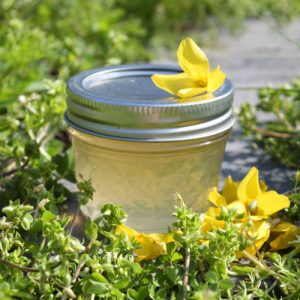
Forsythia Jelly
Equipment
- a saucepan for boiling 4 1/2 cups of water
- heatproof pitcher or container, for infusing forsythia flowers
- a strainer, to strain the flower infusion
- heavy-duty 6-8 quart pot or stockpot
- a bowl that will hold 3 cups of sugar
- an equal sized or slightly smaller bowl
- 6 half-pint jelly jars with lids and rings
- ladle, for spooning hot jelly into hot jars
- water bath canner with rack, if canning your jelly
Ingredients
For the Forsythia Tea
- 2 cups forsythia flowers, with the green parts removed
- 4 1/2 cups water
For the Forsythia Jelly
- 4 cups forsythia tea
- 3 cups sugar
- 2 tbsp lemon juice
- 1 packet Sure-Jell no or low sugar needed pectin (1.75 oz pink box)
- 1/2 tsp butter (optional, to add at any point during cooking to reduce foam in your jelly)
Instructions
To Make the Forsythia Tea
- Bring 4 1/2 cups of water to a boil in a saucepan.
- While the water heats, place 2 cups of the prepared forsythia flowers into a heatproof container or pitcher.
- Pour the boiling water over the forsythia flowers, cover the container loosely, and steep for around 4 hours. (A shorter steeping time produces a lighter color, while a longer steeping time makes a darker color.)
- Strain, squeezing out extra water with your fingers.
- You should end up with about 4 cups of forsythia tea. It will look orange at this point – that's okay!
- If you aren't making your jelly right away, refrigerate the tea for 24 hours, or freeze for longer storage of several months.
To Make the Forsythia Jelly
- If you're water bath canning, start heating the water in your canner.
- Heat your jars by keeping them in the water bath canner, a pot of boiling water, or your dishwasher set to sanitize cycle. (You want them hot when pouring in hot jelly, or they could crack.)
- Place the 4 cups of forsythia tea infusion in a heavy stockpot.
- Add 2 tbsp lemon juice to the tea.
- Measure 3 cups of sugar into a bowl.
- Scoop 1/4 cup of that sugar and place it into a new bowl.
- Add the pack of pectin to the smaller bowl of sugar (containing 1/4 cup) and stir well.
- Add the pectin that's mixed with the 1/4 cup sugar, to the forsythia tea infusion and lemon juice that's already in the pot.
- Turn the burner to high heat and stir constantly until the mixture reaches a full rolling boil.
- Add the remaining sugar and return it to a full rolling boil, stirring constantly.
- Boil for one minute, still stirring constantly. The jelly will boil up significantly at this point.
- After one minute, remove the pot from the heat.
- Working quickly but carefully, remove the hot jars onto a towel, and ladle or pour the hot jelly mixture into them.
- If you plan to water bath can your jelly, leave a 1/4 inch headspace at the top of each jar.
- Wipe the rims with a damp paper towel, to remove any sticky residue that might interfere with the seal.
- Cover each jar with a lid and screw the ring on firmly.
- Optionally: For longer storage, water bath can your jelly.
To Water Bath Can Forsythia Jelly
- After filling the jars, and adding the lids/rings, carefully lower them into the hot water of a water bath canner. (Use a canning rack if available, or a canning jar lifter.)
- Cover the canner with its lid.
- Heat the water to a boil over medium high heat.
- Boil the jars, with the lid on the canner, for 10 minutes.
- After 10 minutes, remove the lid carefully (watch for steam!), and remove the jars.
- Place the jars on a towel and leave them undisturbed for at least 12 to 24 hours.
Shelf Life of Forsythia Jelly
- Store any jars that failed to seal in the refrigerator and use within 3 weeks. Successfully sealed jars are shelf-stable and can be stored for 1 year. Once opened, refrigerate and use within 3 weeks.

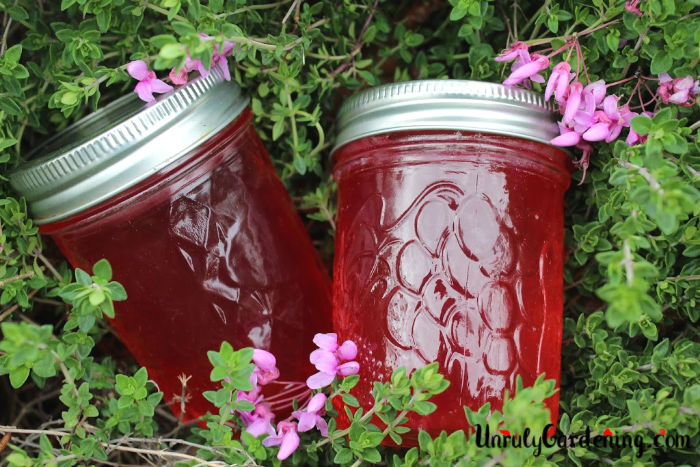
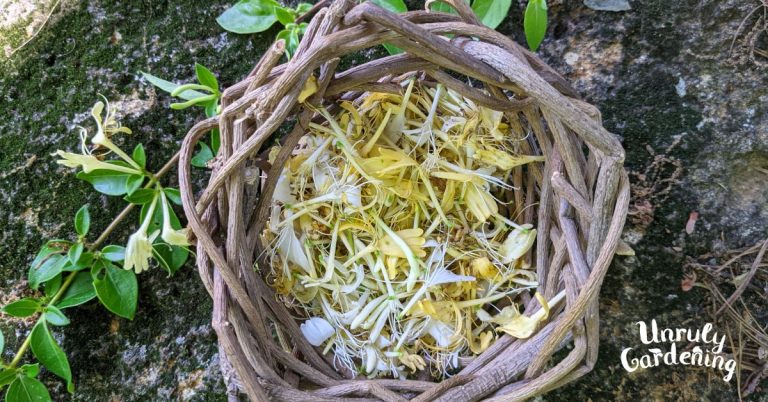
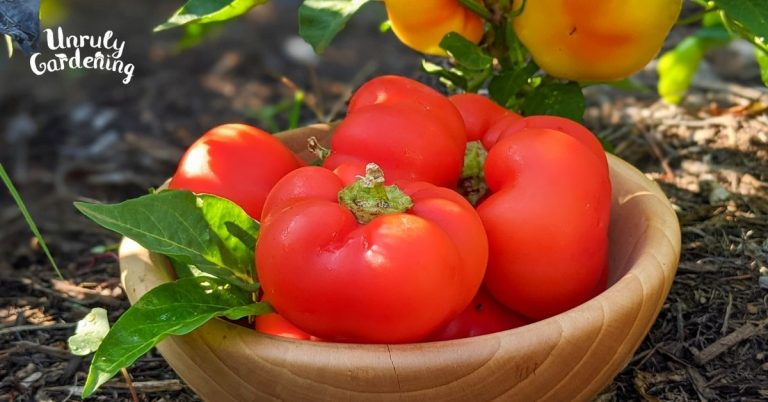
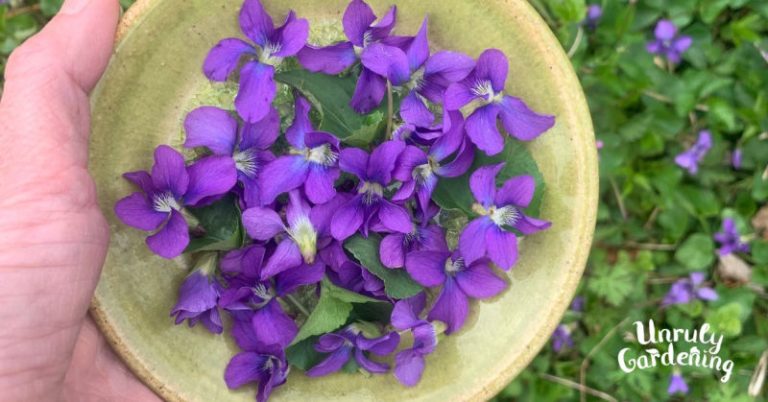
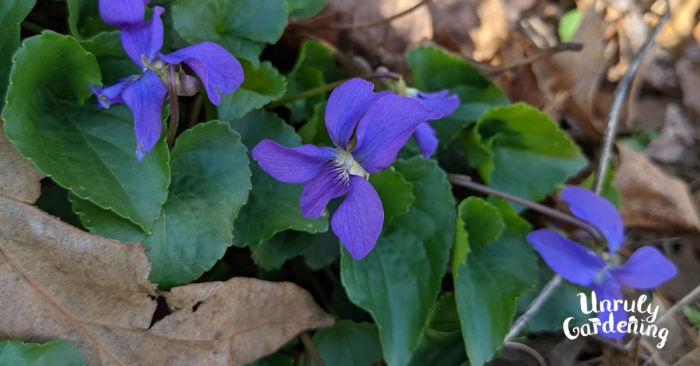
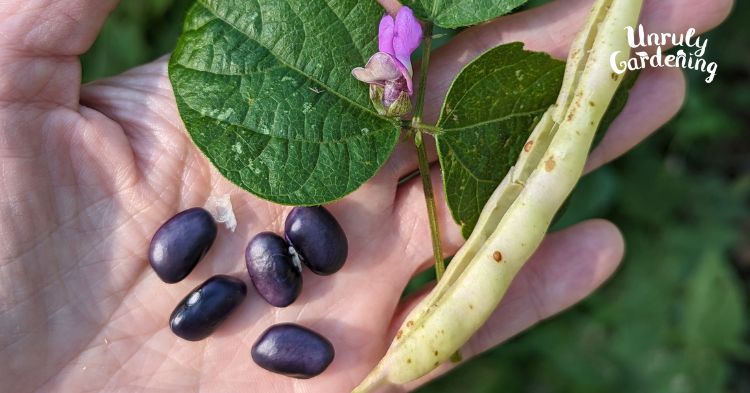
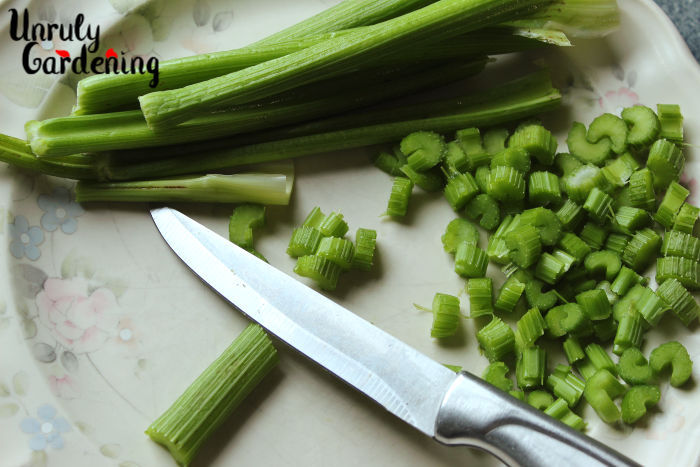
For those of us is who can’t have, or don’t like lemon, I substitute apple cider vinegar in my jellies and jams.
The vinegar taste doesn’t come through. On lighter flavored flower jellies there may be a subtle apple flavor.
Hi Chris, That’s such a great idea! Thanks for sharing!
Hi there, Could the forsythia jelly be used to color frosting yellow? I am looking for natural food coloring. Thank you. Cathy
Hi Cathy! That’s a really good idea – I haven’t tried that!
The color is so subtle though, I’m not sure it will be bright yellow enough.
You could try a tiny bit of saffron powder. Turmeric or annatto powder may work too, but you have to be VERY lighthanded, so it won’t affect flavor.
Before I throw these three jars of tea out and start again, why can the tea only be kept in the fridge for 24 hrs? I had a hard time finding the pink surjel… it’s been a few days…
Hi Denita! It would probably be okay up to 48 hours, but things like flower infusions, herbal teas, etc can quickly build up bacteria and mold in them. Refrigeration slows it down, but they still spoil pretty easily. The teas freeze really well though. I do that sometimes when I’m too busy to make the jelly right away, then pull it out later & thaw in the fridge overnight when things are less busy. 🙂